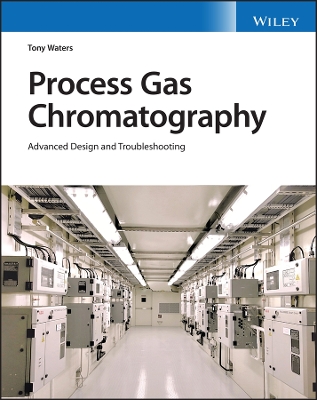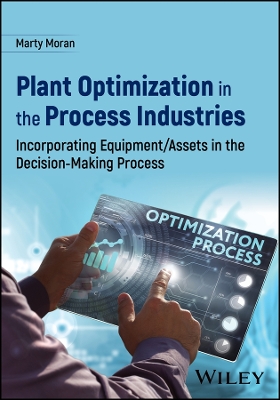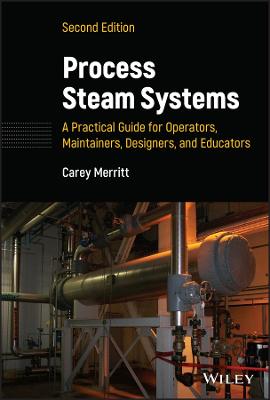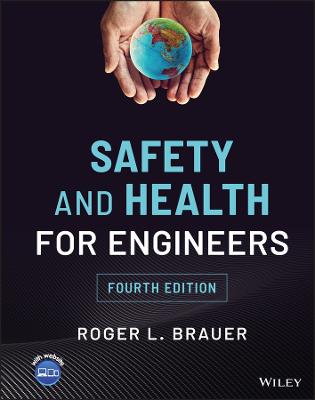Fuel Additives
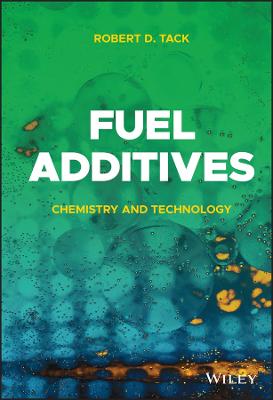 -15%
portes grátis
-15%
portes grátis
Fuel Additives
Chemistry and Technology
Tack, Robert D.
John Wiley & Sons Inc
10/2022
368
Dura
Inglês
9781119707417
15 a 20 dias
642
Descrição não disponível.
Acknowledgements xi
Preface xii
Abbreviations xv
1 Fuels and Fuel Additives - Overview 1
1.1 Introduction 1
1.2 Refinery Operations and Processes 2
1.2.1 Distillation 2
1.2.2 Balancing Production to the Demand Barrel 5
1.2.3 Catalytic Conversions 11
1.2.4 Alkylation 11
1.2.5 Coking 12
1.3 Finished Fuels 12
1.3.1 Gasoline 13
1.3.2 Middle Distillates 16
1.3.2.1 Jet Fuel 17
1.3.2.2 Diesel Fuel 18
1.3.2.3 Heating Oils 20
1.3.2.4 Marine Diesel Fuels and Power Generation 20
1.3.4 Coal, Gas or Biomass to Liquids 22
1.3.5 Biofuels 22
1.4 Fuel Additives - Value and Need 23
1.4.1 Value 23
1.4.2 Need 24
1.5 The Application of Fuel Additives 26
1.6 Fuel Quality, Taxation, Dyes and Markers 30
1.6.1 The Need for Quality and Brand Recognition 30
1.6.2 The Introduction and Growth of Fuel Taxation 30
1.6.3 The Use and Chemistries of Fuel Dyes 33
1.6.4 Invisible Fuel Markers 36
1.7 Future Need for Fuel Additives 39
2 Fuel Stabilisers: Antioxidants and Metal Deactivators 51
2.1 Introduction 51
2.2 Detailed Problems 52
2.2.1 Oxidative Stability of Jet Fuels 52
2.2.2 Oxidative Stability of Gasoline 54
2.2.3 Oxidative Stability of Diesel Fuel 54
2.3 Tests of Oxidative Stability 55
2.3.1 Jet Fuel Stability Tests 55
2.3.2 Gasoline Stability Tests 56
2.3.3 Diesel Fuel Stability Tests 57
2.4 Stability Additives: Antioxidants and Metal Deactivators 58
2.4.1 Antioxidants 58
2.4.2 Metal Deactivators (Mdas) 61
2.4.3 Thermal Stability Additives 61
2.5 Mechanisms 62
2.5.1 Hydrogen Atom Abstraction from Hydrocarbon Molecules 62
2.5.2 Initiation 65
2.5.3 Propagation 65
2.5.4 Termination 67
2.5.5 Formation of Difunctional Molecules during Autoxidation 68
2.5.6 Mechanisms of Antioxidant Action 68
3 Fuel Detergents 77
3.1 Introduction 77
3.2 Detailed Problems 78
3.2.1 Gasoline Engines 78
3.2.2 Fuel Injector Deposits in Diesel Engines 80
3.2.3 Heating Oils 82
3.2.4 Jet Engines 82
3.3 What Detergents Do 83
3.4 The Chemistries of Fuel Detergents 86
3.4.1 General Background 86
3.4.2 Detail 90
3.4.2a Poly-IsoButylene, PIB 90
3.4.2b PIBSA 91
3.4.2c PIBSA-PAM 92
3.4.2d PIB-Amine 96
3.4.2e Mannich Detergent 99
3.4.2f Imidazoline 100
3.4.2g PIBSA/Polyols 101
3.4.2h Polyether Amines 101
3.4.2i Quaternised Detergents 102
3.4.2j Carrier Fluid 104
3.4.2k Jet Fuel Detergent 105
3.5 Mechanism of Detergency Action 106
3.5.1 Chemical Identities of Deposits 106
3.5.1a Oxygenated Hydrocarbons 106
3.5.1b Zinc Deposits 110
3.5.2 The Action of Detergents 111
3.5.3 Stabilisation of Dispersed Deposit or Particulate Material by Fuel Detergents in Gasoline and Middle Distillates 114
3.5.4 Chemical Reactions of Dispersants with Deposits 116
4 Cold Flow Improvers 129
4.1 Introduction 129
4.2 Detailed Problems and What Cold Flow Improvers Do 131
4.2.1 Diesel Vehicle Fuel Systems and Operability 132
4.2.2 Cloud Point Limitation 133
4.2.3 Pour Point Limitation 134
4.2.4 Diesel Vehicle Operability and the Cold Filter Plugging Point 135
4.2.5 Cold Flow Improvement and Fuel Variations 138
4.2.6 Cloud Point Depression 144
4.2.7 Wax Anti-Settling 145
4.3 The Organic Chemistry of Wax Crystal Modifying Cold Flow Improvers 149
4.3.1 Linear Ethylene Copolymers 152
4.3.2 The Free Radical Polymerisation Process 154
4.3.3 Comb Polymers 159
4.3.3a Free Radical Comb Polymers 159
4.3.3b Poly-1-Alkenes 161
4.3.4 Polar Nitrogen Compounds - Long Chain Alkyl-Amine Derivatives 162
4.3.5 Nucleators 164
4.3.6 Alkylphenol-Formaldehyde Condensates (Apfcs) 168
4.4 Mechanism of Wax Crystallization and Modification 170
4.4.1 Wax Crystal Compositions and Structures 170
4.4.1a Compositions 170
4.4.1b Structures 173
4.4.2 The Crystallisation Process 175
4.4.3 n-Alkane-Wax Nucleation 175
4.4.4 Effects of Additives on Nucleation 177
4.4.4a EVAC Nucleator 177
4.4.4b Nucleator Additives with Crystallinity, PEG Esters and PEPEP 179
4.4.5 n-Alkane-Wax Crystal Growth 181
4.4.5a Comparison of Untreated and WCM Treated Wax Crystals 181
4.4.5b Mechanism of Crystal Growth 182
4.4.5c Effects of Additives on Crystal Growth 184
4.4.5d Very Small Wax Crystals and Wax Anti-Settling 188
4.4.5e Cloud Point Depression 190
4.4.5f Rapid Growth of Wax Crystals in Narrow Boiling Distillates 191
4.6 Cold Flow Tests 193
5 Protection of Metal Surfaces in Fuel Systems: Lubricity Improvers and Corrosion Inhibitors 209
5.1 Lubricity: Introduction 209
5.2 Detailed Lubricity Problems 211
5.2.1 Jet Fuel 211
5.2.2 Gasoline 212
5.2.3 Diesel 214
5.3 Chemistries of Lubricity Improvers 216
5.3.1 Carboxylic Acids as Lubricity Improvers 216
5.3.2 Carboxylic Esters and Amides as Lubricity Improvers 218
5.4 Understanding of Boundary Friction and Lubricity 220
5.5 Introduction: Corrosion in Fuel Systems 224
5.6 Corrosion Issues in Various Fuels 226
5.6.1 Automotive Gasoline and Diesel Fuels 226
5.6.2 Jet Fuels 227
5.6.3 Heating Oils 228
5.6.4 Distillate Marine Fuels and Off-Road Fuels 229
5.6.5 Heavy (Residual) Fuels 229
5.7 Chemistries of Fuel Corrosion Inhibitors 230
5.7.1 Corrosion by Water/Oxygen and by Carboxylic Acids 231
5.7.2 Corrosion by Sulphur 235
5.7.3 Corrosion by Vanadium Pentoxide 240
5.8 Mechanisms of Corrosion and Its Inhibition 241
5.8.1 Corrosion by Water/Oxygen and by Carboxylic Acids 241
5.8.2 Corrosion by Sulphur 244
5.8.3 Corrosion by Vanadium Pentoxide 245
6 Combustion Improvers 261
6.1 The Need for Combustion Improvers 261
6.2 Combustion Improver Specific Problems 262
6.2.1 Gasoline Engine Knock and Octane Boosters 262
6.2.2 Diesel Knock and Cetane Improvers 265
6.2.3 Combustion Improvers for Heating Oils and Heavy Fuels 269
6.2.4 Combustion Improvers for Particulates in Diesel Engine Exhausts 270
6.3 Mechanisms of Soot Formation and Its Removal 275
6.3.1 The Formation of Soot 275
7 Additives to Treat Problems during the Movement and Storage of Fuels 287
7.1 Introduction 287
7.2 Drag Reducing Agents 288
7.2.1 The Pipeline Problem 288
7.2.2 Chemistries of DRAs 289
7.2.3 The Process of Drag Reduction 291
7.3 Static Dissipaters 291
7.3.1 The Problem of Static Electricity in Fuels 291
7.3.2 Chemistries of Static Dissipaters 294
7.3.3 Understanding Static Dissipaters 299
7.4 Antifoam Additives 302
7.4.1 The Problem of Foaming 302
7.4.2 What Antifoams Do and Their Chemistries 303
7.4.3 Syntheses of Silicone Antifoams 304
7.4.4 How Antifoam Additives Work 306
7.5 Demulsifiers and Dehazers 307
7.5.1 The Problem of Water-in-Fuel Emulsions or Haze 307
7.5.2 The Chemistry of Demulsifiers 308
7.5.3 The Process of Demulsification 313
7.6 Anti-Icing 315
7.6.1 The Problem of Icing 315
7.6.2 The Gasoline Icing Problem 316
7.6.3 The Jet Fuel Icing Problem 317
7.6.4 Jet Fuel Anti-Icing Additives 319
7.7 Biocides 320
7.7.1 Problems 320
7.7.2 Chemistries of Biocides Used in Fuels 321
Index 335
Preface xii
Abbreviations xv
1 Fuels and Fuel Additives - Overview 1
1.1 Introduction 1
1.2 Refinery Operations and Processes 2
1.2.1 Distillation 2
1.2.2 Balancing Production to the Demand Barrel 5
1.2.3 Catalytic Conversions 11
1.2.4 Alkylation 11
1.2.5 Coking 12
1.3 Finished Fuels 12
1.3.1 Gasoline 13
1.3.2 Middle Distillates 16
1.3.2.1 Jet Fuel 17
1.3.2.2 Diesel Fuel 18
1.3.2.3 Heating Oils 20
1.3.2.4 Marine Diesel Fuels and Power Generation 20
1.3.4 Coal, Gas or Biomass to Liquids 22
1.3.5 Biofuels 22
1.4 Fuel Additives - Value and Need 23
1.4.1 Value 23
1.4.2 Need 24
1.5 The Application of Fuel Additives 26
1.6 Fuel Quality, Taxation, Dyes and Markers 30
1.6.1 The Need for Quality and Brand Recognition 30
1.6.2 The Introduction and Growth of Fuel Taxation 30
1.6.3 The Use and Chemistries of Fuel Dyes 33
1.6.4 Invisible Fuel Markers 36
1.7 Future Need for Fuel Additives 39
2 Fuel Stabilisers: Antioxidants and Metal Deactivators 51
2.1 Introduction 51
2.2 Detailed Problems 52
2.2.1 Oxidative Stability of Jet Fuels 52
2.2.2 Oxidative Stability of Gasoline 54
2.2.3 Oxidative Stability of Diesel Fuel 54
2.3 Tests of Oxidative Stability 55
2.3.1 Jet Fuel Stability Tests 55
2.3.2 Gasoline Stability Tests 56
2.3.3 Diesel Fuel Stability Tests 57
2.4 Stability Additives: Antioxidants and Metal Deactivators 58
2.4.1 Antioxidants 58
2.4.2 Metal Deactivators (Mdas) 61
2.4.3 Thermal Stability Additives 61
2.5 Mechanisms 62
2.5.1 Hydrogen Atom Abstraction from Hydrocarbon Molecules 62
2.5.2 Initiation 65
2.5.3 Propagation 65
2.5.4 Termination 67
2.5.5 Formation of Difunctional Molecules during Autoxidation 68
2.5.6 Mechanisms of Antioxidant Action 68
3 Fuel Detergents 77
3.1 Introduction 77
3.2 Detailed Problems 78
3.2.1 Gasoline Engines 78
3.2.2 Fuel Injector Deposits in Diesel Engines 80
3.2.3 Heating Oils 82
3.2.4 Jet Engines 82
3.3 What Detergents Do 83
3.4 The Chemistries of Fuel Detergents 86
3.4.1 General Background 86
3.4.2 Detail 90
3.4.2a Poly-IsoButylene, PIB 90
3.4.2b PIBSA 91
3.4.2c PIBSA-PAM 92
3.4.2d PIB-Amine 96
3.4.2e Mannich Detergent 99
3.4.2f Imidazoline 100
3.4.2g PIBSA/Polyols 101
3.4.2h Polyether Amines 101
3.4.2i Quaternised Detergents 102
3.4.2j Carrier Fluid 104
3.4.2k Jet Fuel Detergent 105
3.5 Mechanism of Detergency Action 106
3.5.1 Chemical Identities of Deposits 106
3.5.1a Oxygenated Hydrocarbons 106
3.5.1b Zinc Deposits 110
3.5.2 The Action of Detergents 111
3.5.3 Stabilisation of Dispersed Deposit or Particulate Material by Fuel Detergents in Gasoline and Middle Distillates 114
3.5.4 Chemical Reactions of Dispersants with Deposits 116
4 Cold Flow Improvers 129
4.1 Introduction 129
4.2 Detailed Problems and What Cold Flow Improvers Do 131
4.2.1 Diesel Vehicle Fuel Systems and Operability 132
4.2.2 Cloud Point Limitation 133
4.2.3 Pour Point Limitation 134
4.2.4 Diesel Vehicle Operability and the Cold Filter Plugging Point 135
4.2.5 Cold Flow Improvement and Fuel Variations 138
4.2.6 Cloud Point Depression 144
4.2.7 Wax Anti-Settling 145
4.3 The Organic Chemistry of Wax Crystal Modifying Cold Flow Improvers 149
4.3.1 Linear Ethylene Copolymers 152
4.3.2 The Free Radical Polymerisation Process 154
4.3.3 Comb Polymers 159
4.3.3a Free Radical Comb Polymers 159
4.3.3b Poly-1-Alkenes 161
4.3.4 Polar Nitrogen Compounds - Long Chain Alkyl-Amine Derivatives 162
4.3.5 Nucleators 164
4.3.6 Alkylphenol-Formaldehyde Condensates (Apfcs) 168
4.4 Mechanism of Wax Crystallization and Modification 170
4.4.1 Wax Crystal Compositions and Structures 170
4.4.1a Compositions 170
4.4.1b Structures 173
4.4.2 The Crystallisation Process 175
4.4.3 n-Alkane-Wax Nucleation 175
4.4.4 Effects of Additives on Nucleation 177
4.4.4a EVAC Nucleator 177
4.4.4b Nucleator Additives with Crystallinity, PEG Esters and PEPEP 179
4.4.5 n-Alkane-Wax Crystal Growth 181
4.4.5a Comparison of Untreated and WCM Treated Wax Crystals 181
4.4.5b Mechanism of Crystal Growth 182
4.4.5c Effects of Additives on Crystal Growth 184
4.4.5d Very Small Wax Crystals and Wax Anti-Settling 188
4.4.5e Cloud Point Depression 190
4.4.5f Rapid Growth of Wax Crystals in Narrow Boiling Distillates 191
4.6 Cold Flow Tests 193
5 Protection of Metal Surfaces in Fuel Systems: Lubricity Improvers and Corrosion Inhibitors 209
5.1 Lubricity: Introduction 209
5.2 Detailed Lubricity Problems 211
5.2.1 Jet Fuel 211
5.2.2 Gasoline 212
5.2.3 Diesel 214
5.3 Chemistries of Lubricity Improvers 216
5.3.1 Carboxylic Acids as Lubricity Improvers 216
5.3.2 Carboxylic Esters and Amides as Lubricity Improvers 218
5.4 Understanding of Boundary Friction and Lubricity 220
5.5 Introduction: Corrosion in Fuel Systems 224
5.6 Corrosion Issues in Various Fuels 226
5.6.1 Automotive Gasoline and Diesel Fuels 226
5.6.2 Jet Fuels 227
5.6.3 Heating Oils 228
5.6.4 Distillate Marine Fuels and Off-Road Fuels 229
5.6.5 Heavy (Residual) Fuels 229
5.7 Chemistries of Fuel Corrosion Inhibitors 230
5.7.1 Corrosion by Water/Oxygen and by Carboxylic Acids 231
5.7.2 Corrosion by Sulphur 235
5.7.3 Corrosion by Vanadium Pentoxide 240
5.8 Mechanisms of Corrosion and Its Inhibition 241
5.8.1 Corrosion by Water/Oxygen and by Carboxylic Acids 241
5.8.2 Corrosion by Sulphur 244
5.8.3 Corrosion by Vanadium Pentoxide 245
6 Combustion Improvers 261
6.1 The Need for Combustion Improvers 261
6.2 Combustion Improver Specific Problems 262
6.2.1 Gasoline Engine Knock and Octane Boosters 262
6.2.2 Diesel Knock and Cetane Improvers 265
6.2.3 Combustion Improvers for Heating Oils and Heavy Fuels 269
6.2.4 Combustion Improvers for Particulates in Diesel Engine Exhausts 270
6.3 Mechanisms of Soot Formation and Its Removal 275
6.3.1 The Formation of Soot 275
7 Additives to Treat Problems during the Movement and Storage of Fuels 287
7.1 Introduction 287
7.2 Drag Reducing Agents 288
7.2.1 The Pipeline Problem 288
7.2.2 Chemistries of DRAs 289
7.2.3 The Process of Drag Reduction 291
7.3 Static Dissipaters 291
7.3.1 The Problem of Static Electricity in Fuels 291
7.3.2 Chemistries of Static Dissipaters 294
7.3.3 Understanding Static Dissipaters 299
7.4 Antifoam Additives 302
7.4.1 The Problem of Foaming 302
7.4.2 What Antifoams Do and Their Chemistries 303
7.4.3 Syntheses of Silicone Antifoams 304
7.4.4 How Antifoam Additives Work 306
7.5 Demulsifiers and Dehazers 307
7.5.1 The Problem of Water-in-Fuel Emulsions or Haze 307
7.5.2 The Chemistry of Demulsifiers 308
7.5.3 The Process of Demulsification 313
7.6 Anti-Icing 315
7.6.1 The Problem of Icing 315
7.6.2 The Gasoline Icing Problem 316
7.6.3 The Jet Fuel Icing Problem 317
7.6.4 Jet Fuel Anti-Icing Additives 319
7.7 Biocides 320
7.7.1 Problems 320
7.7.2 Chemistries of Biocides Used in Fuels 321
Index 335
Este título pertence ao(s) assunto(s) indicados(s). Para ver outros títulos clique no assunto desejado.
Fuel additive textbook; fuel additive guide; fuel additive handbook; cold flow improvers; corrosion inhibition; combustion improvement; fuel movement; fuel storage; fuel detergents; fuel stabilization; fuel stabilizers; lubricity improvement; fuel drag reducers; static dissipators; fuel anti-foamants; fuel demulsifiers; de-icers.
Acknowledgements xi
Preface xii
Abbreviations xv
1 Fuels and Fuel Additives - Overview 1
1.1 Introduction 1
1.2 Refinery Operations and Processes 2
1.2.1 Distillation 2
1.2.2 Balancing Production to the Demand Barrel 5
1.2.3 Catalytic Conversions 11
1.2.4 Alkylation 11
1.2.5 Coking 12
1.3 Finished Fuels 12
1.3.1 Gasoline 13
1.3.2 Middle Distillates 16
1.3.2.1 Jet Fuel 17
1.3.2.2 Diesel Fuel 18
1.3.2.3 Heating Oils 20
1.3.2.4 Marine Diesel Fuels and Power Generation 20
1.3.4 Coal, Gas or Biomass to Liquids 22
1.3.5 Biofuels 22
1.4 Fuel Additives - Value and Need 23
1.4.1 Value 23
1.4.2 Need 24
1.5 The Application of Fuel Additives 26
1.6 Fuel Quality, Taxation, Dyes and Markers 30
1.6.1 The Need for Quality and Brand Recognition 30
1.6.2 The Introduction and Growth of Fuel Taxation 30
1.6.3 The Use and Chemistries of Fuel Dyes 33
1.6.4 Invisible Fuel Markers 36
1.7 Future Need for Fuel Additives 39
2 Fuel Stabilisers: Antioxidants and Metal Deactivators 51
2.1 Introduction 51
2.2 Detailed Problems 52
2.2.1 Oxidative Stability of Jet Fuels 52
2.2.2 Oxidative Stability of Gasoline 54
2.2.3 Oxidative Stability of Diesel Fuel 54
2.3 Tests of Oxidative Stability 55
2.3.1 Jet Fuel Stability Tests 55
2.3.2 Gasoline Stability Tests 56
2.3.3 Diesel Fuel Stability Tests 57
2.4 Stability Additives: Antioxidants and Metal Deactivators 58
2.4.1 Antioxidants 58
2.4.2 Metal Deactivators (Mdas) 61
2.4.3 Thermal Stability Additives 61
2.5 Mechanisms 62
2.5.1 Hydrogen Atom Abstraction from Hydrocarbon Molecules 62
2.5.2 Initiation 65
2.5.3 Propagation 65
2.5.4 Termination 67
2.5.5 Formation of Difunctional Molecules during Autoxidation 68
2.5.6 Mechanisms of Antioxidant Action 68
3 Fuel Detergents 77
3.1 Introduction 77
3.2 Detailed Problems 78
3.2.1 Gasoline Engines 78
3.2.2 Fuel Injector Deposits in Diesel Engines 80
3.2.3 Heating Oils 82
3.2.4 Jet Engines 82
3.3 What Detergents Do 83
3.4 The Chemistries of Fuel Detergents 86
3.4.1 General Background 86
3.4.2 Detail 90
3.4.2a Poly-IsoButylene, PIB 90
3.4.2b PIBSA 91
3.4.2c PIBSA-PAM 92
3.4.2d PIB-Amine 96
3.4.2e Mannich Detergent 99
3.4.2f Imidazoline 100
3.4.2g PIBSA/Polyols 101
3.4.2h Polyether Amines 101
3.4.2i Quaternised Detergents 102
3.4.2j Carrier Fluid 104
3.4.2k Jet Fuel Detergent 105
3.5 Mechanism of Detergency Action 106
3.5.1 Chemical Identities of Deposits 106
3.5.1a Oxygenated Hydrocarbons 106
3.5.1b Zinc Deposits 110
3.5.2 The Action of Detergents 111
3.5.3 Stabilisation of Dispersed Deposit or Particulate Material by Fuel Detergents in Gasoline and Middle Distillates 114
3.5.4 Chemical Reactions of Dispersants with Deposits 116
4 Cold Flow Improvers 129
4.1 Introduction 129
4.2 Detailed Problems and What Cold Flow Improvers Do 131
4.2.1 Diesel Vehicle Fuel Systems and Operability 132
4.2.2 Cloud Point Limitation 133
4.2.3 Pour Point Limitation 134
4.2.4 Diesel Vehicle Operability and the Cold Filter Plugging Point 135
4.2.5 Cold Flow Improvement and Fuel Variations 138
4.2.6 Cloud Point Depression 144
4.2.7 Wax Anti-Settling 145
4.3 The Organic Chemistry of Wax Crystal Modifying Cold Flow Improvers 149
4.3.1 Linear Ethylene Copolymers 152
4.3.2 The Free Radical Polymerisation Process 154
4.3.3 Comb Polymers 159
4.3.3a Free Radical Comb Polymers 159
4.3.3b Poly-1-Alkenes 161
4.3.4 Polar Nitrogen Compounds - Long Chain Alkyl-Amine Derivatives 162
4.3.5 Nucleators 164
4.3.6 Alkylphenol-Formaldehyde Condensates (Apfcs) 168
4.4 Mechanism of Wax Crystallization and Modification 170
4.4.1 Wax Crystal Compositions and Structures 170
4.4.1a Compositions 170
4.4.1b Structures 173
4.4.2 The Crystallisation Process 175
4.4.3 n-Alkane-Wax Nucleation 175
4.4.4 Effects of Additives on Nucleation 177
4.4.4a EVAC Nucleator 177
4.4.4b Nucleator Additives with Crystallinity, PEG Esters and PEPEP 179
4.4.5 n-Alkane-Wax Crystal Growth 181
4.4.5a Comparison of Untreated and WCM Treated Wax Crystals 181
4.4.5b Mechanism of Crystal Growth 182
4.4.5c Effects of Additives on Crystal Growth 184
4.4.5d Very Small Wax Crystals and Wax Anti-Settling 188
4.4.5e Cloud Point Depression 190
4.4.5f Rapid Growth of Wax Crystals in Narrow Boiling Distillates 191
4.6 Cold Flow Tests 193
5 Protection of Metal Surfaces in Fuel Systems: Lubricity Improvers and Corrosion Inhibitors 209
5.1 Lubricity: Introduction 209
5.2 Detailed Lubricity Problems 211
5.2.1 Jet Fuel 211
5.2.2 Gasoline 212
5.2.3 Diesel 214
5.3 Chemistries of Lubricity Improvers 216
5.3.1 Carboxylic Acids as Lubricity Improvers 216
5.3.2 Carboxylic Esters and Amides as Lubricity Improvers 218
5.4 Understanding of Boundary Friction and Lubricity 220
5.5 Introduction: Corrosion in Fuel Systems 224
5.6 Corrosion Issues in Various Fuels 226
5.6.1 Automotive Gasoline and Diesel Fuels 226
5.6.2 Jet Fuels 227
5.6.3 Heating Oils 228
5.6.4 Distillate Marine Fuels and Off-Road Fuels 229
5.6.5 Heavy (Residual) Fuels 229
5.7 Chemistries of Fuel Corrosion Inhibitors 230
5.7.1 Corrosion by Water/Oxygen and by Carboxylic Acids 231
5.7.2 Corrosion by Sulphur 235
5.7.3 Corrosion by Vanadium Pentoxide 240
5.8 Mechanisms of Corrosion and Its Inhibition 241
5.8.1 Corrosion by Water/Oxygen and by Carboxylic Acids 241
5.8.2 Corrosion by Sulphur 244
5.8.3 Corrosion by Vanadium Pentoxide 245
6 Combustion Improvers 261
6.1 The Need for Combustion Improvers 261
6.2 Combustion Improver Specific Problems 262
6.2.1 Gasoline Engine Knock and Octane Boosters 262
6.2.2 Diesel Knock and Cetane Improvers 265
6.2.3 Combustion Improvers for Heating Oils and Heavy Fuels 269
6.2.4 Combustion Improvers for Particulates in Diesel Engine Exhausts 270
6.3 Mechanisms of Soot Formation and Its Removal 275
6.3.1 The Formation of Soot 275
7 Additives to Treat Problems during the Movement and Storage of Fuels 287
7.1 Introduction 287
7.2 Drag Reducing Agents 288
7.2.1 The Pipeline Problem 288
7.2.2 Chemistries of DRAs 289
7.2.3 The Process of Drag Reduction 291
7.3 Static Dissipaters 291
7.3.1 The Problem of Static Electricity in Fuels 291
7.3.2 Chemistries of Static Dissipaters 294
7.3.3 Understanding Static Dissipaters 299
7.4 Antifoam Additives 302
7.4.1 The Problem of Foaming 302
7.4.2 What Antifoams Do and Their Chemistries 303
7.4.3 Syntheses of Silicone Antifoams 304
7.4.4 How Antifoam Additives Work 306
7.5 Demulsifiers and Dehazers 307
7.5.1 The Problem of Water-in-Fuel Emulsions or Haze 307
7.5.2 The Chemistry of Demulsifiers 308
7.5.3 The Process of Demulsification 313
7.6 Anti-Icing 315
7.6.1 The Problem of Icing 315
7.6.2 The Gasoline Icing Problem 316
7.6.3 The Jet Fuel Icing Problem 317
7.6.4 Jet Fuel Anti-Icing Additives 319
7.7 Biocides 320
7.7.1 Problems 320
7.7.2 Chemistries of Biocides Used in Fuels 321
Index 335
Preface xii
Abbreviations xv
1 Fuels and Fuel Additives - Overview 1
1.1 Introduction 1
1.2 Refinery Operations and Processes 2
1.2.1 Distillation 2
1.2.2 Balancing Production to the Demand Barrel 5
1.2.3 Catalytic Conversions 11
1.2.4 Alkylation 11
1.2.5 Coking 12
1.3 Finished Fuels 12
1.3.1 Gasoline 13
1.3.2 Middle Distillates 16
1.3.2.1 Jet Fuel 17
1.3.2.2 Diesel Fuel 18
1.3.2.3 Heating Oils 20
1.3.2.4 Marine Diesel Fuels and Power Generation 20
1.3.4 Coal, Gas or Biomass to Liquids 22
1.3.5 Biofuels 22
1.4 Fuel Additives - Value and Need 23
1.4.1 Value 23
1.4.2 Need 24
1.5 The Application of Fuel Additives 26
1.6 Fuel Quality, Taxation, Dyes and Markers 30
1.6.1 The Need for Quality and Brand Recognition 30
1.6.2 The Introduction and Growth of Fuel Taxation 30
1.6.3 The Use and Chemistries of Fuel Dyes 33
1.6.4 Invisible Fuel Markers 36
1.7 Future Need for Fuel Additives 39
2 Fuel Stabilisers: Antioxidants and Metal Deactivators 51
2.1 Introduction 51
2.2 Detailed Problems 52
2.2.1 Oxidative Stability of Jet Fuels 52
2.2.2 Oxidative Stability of Gasoline 54
2.2.3 Oxidative Stability of Diesel Fuel 54
2.3 Tests of Oxidative Stability 55
2.3.1 Jet Fuel Stability Tests 55
2.3.2 Gasoline Stability Tests 56
2.3.3 Diesel Fuel Stability Tests 57
2.4 Stability Additives: Antioxidants and Metal Deactivators 58
2.4.1 Antioxidants 58
2.4.2 Metal Deactivators (Mdas) 61
2.4.3 Thermal Stability Additives 61
2.5 Mechanisms 62
2.5.1 Hydrogen Atom Abstraction from Hydrocarbon Molecules 62
2.5.2 Initiation 65
2.5.3 Propagation 65
2.5.4 Termination 67
2.5.5 Formation of Difunctional Molecules during Autoxidation 68
2.5.6 Mechanisms of Antioxidant Action 68
3 Fuel Detergents 77
3.1 Introduction 77
3.2 Detailed Problems 78
3.2.1 Gasoline Engines 78
3.2.2 Fuel Injector Deposits in Diesel Engines 80
3.2.3 Heating Oils 82
3.2.4 Jet Engines 82
3.3 What Detergents Do 83
3.4 The Chemistries of Fuel Detergents 86
3.4.1 General Background 86
3.4.2 Detail 90
3.4.2a Poly-IsoButylene, PIB 90
3.4.2b PIBSA 91
3.4.2c PIBSA-PAM 92
3.4.2d PIB-Amine 96
3.4.2e Mannich Detergent 99
3.4.2f Imidazoline 100
3.4.2g PIBSA/Polyols 101
3.4.2h Polyether Amines 101
3.4.2i Quaternised Detergents 102
3.4.2j Carrier Fluid 104
3.4.2k Jet Fuel Detergent 105
3.5 Mechanism of Detergency Action 106
3.5.1 Chemical Identities of Deposits 106
3.5.1a Oxygenated Hydrocarbons 106
3.5.1b Zinc Deposits 110
3.5.2 The Action of Detergents 111
3.5.3 Stabilisation of Dispersed Deposit or Particulate Material by Fuel Detergents in Gasoline and Middle Distillates 114
3.5.4 Chemical Reactions of Dispersants with Deposits 116
4 Cold Flow Improvers 129
4.1 Introduction 129
4.2 Detailed Problems and What Cold Flow Improvers Do 131
4.2.1 Diesel Vehicle Fuel Systems and Operability 132
4.2.2 Cloud Point Limitation 133
4.2.3 Pour Point Limitation 134
4.2.4 Diesel Vehicle Operability and the Cold Filter Plugging Point 135
4.2.5 Cold Flow Improvement and Fuel Variations 138
4.2.6 Cloud Point Depression 144
4.2.7 Wax Anti-Settling 145
4.3 The Organic Chemistry of Wax Crystal Modifying Cold Flow Improvers 149
4.3.1 Linear Ethylene Copolymers 152
4.3.2 The Free Radical Polymerisation Process 154
4.3.3 Comb Polymers 159
4.3.3a Free Radical Comb Polymers 159
4.3.3b Poly-1-Alkenes 161
4.3.4 Polar Nitrogen Compounds - Long Chain Alkyl-Amine Derivatives 162
4.3.5 Nucleators 164
4.3.6 Alkylphenol-Formaldehyde Condensates (Apfcs) 168
4.4 Mechanism of Wax Crystallization and Modification 170
4.4.1 Wax Crystal Compositions and Structures 170
4.4.1a Compositions 170
4.4.1b Structures 173
4.4.2 The Crystallisation Process 175
4.4.3 n-Alkane-Wax Nucleation 175
4.4.4 Effects of Additives on Nucleation 177
4.4.4a EVAC Nucleator 177
4.4.4b Nucleator Additives with Crystallinity, PEG Esters and PEPEP 179
4.4.5 n-Alkane-Wax Crystal Growth 181
4.4.5a Comparison of Untreated and WCM Treated Wax Crystals 181
4.4.5b Mechanism of Crystal Growth 182
4.4.5c Effects of Additives on Crystal Growth 184
4.4.5d Very Small Wax Crystals and Wax Anti-Settling 188
4.4.5e Cloud Point Depression 190
4.4.5f Rapid Growth of Wax Crystals in Narrow Boiling Distillates 191
4.6 Cold Flow Tests 193
5 Protection of Metal Surfaces in Fuel Systems: Lubricity Improvers and Corrosion Inhibitors 209
5.1 Lubricity: Introduction 209
5.2 Detailed Lubricity Problems 211
5.2.1 Jet Fuel 211
5.2.2 Gasoline 212
5.2.3 Diesel 214
5.3 Chemistries of Lubricity Improvers 216
5.3.1 Carboxylic Acids as Lubricity Improvers 216
5.3.2 Carboxylic Esters and Amides as Lubricity Improvers 218
5.4 Understanding of Boundary Friction and Lubricity 220
5.5 Introduction: Corrosion in Fuel Systems 224
5.6 Corrosion Issues in Various Fuels 226
5.6.1 Automotive Gasoline and Diesel Fuels 226
5.6.2 Jet Fuels 227
5.6.3 Heating Oils 228
5.6.4 Distillate Marine Fuels and Off-Road Fuels 229
5.6.5 Heavy (Residual) Fuels 229
5.7 Chemistries of Fuel Corrosion Inhibitors 230
5.7.1 Corrosion by Water/Oxygen and by Carboxylic Acids 231
5.7.2 Corrosion by Sulphur 235
5.7.3 Corrosion by Vanadium Pentoxide 240
5.8 Mechanisms of Corrosion and Its Inhibition 241
5.8.1 Corrosion by Water/Oxygen and by Carboxylic Acids 241
5.8.2 Corrosion by Sulphur 244
5.8.3 Corrosion by Vanadium Pentoxide 245
6 Combustion Improvers 261
6.1 The Need for Combustion Improvers 261
6.2 Combustion Improver Specific Problems 262
6.2.1 Gasoline Engine Knock and Octane Boosters 262
6.2.2 Diesel Knock and Cetane Improvers 265
6.2.3 Combustion Improvers for Heating Oils and Heavy Fuels 269
6.2.4 Combustion Improvers for Particulates in Diesel Engine Exhausts 270
6.3 Mechanisms of Soot Formation and Its Removal 275
6.3.1 The Formation of Soot 275
7 Additives to Treat Problems during the Movement and Storage of Fuels 287
7.1 Introduction 287
7.2 Drag Reducing Agents 288
7.2.1 The Pipeline Problem 288
7.2.2 Chemistries of DRAs 289
7.2.3 The Process of Drag Reduction 291
7.3 Static Dissipaters 291
7.3.1 The Problem of Static Electricity in Fuels 291
7.3.2 Chemistries of Static Dissipaters 294
7.3.3 Understanding Static Dissipaters 299
7.4 Antifoam Additives 302
7.4.1 The Problem of Foaming 302
7.4.2 What Antifoams Do and Their Chemistries 303
7.4.3 Syntheses of Silicone Antifoams 304
7.4.4 How Antifoam Additives Work 306
7.5 Demulsifiers and Dehazers 307
7.5.1 The Problem of Water-in-Fuel Emulsions or Haze 307
7.5.2 The Chemistry of Demulsifiers 308
7.5.3 The Process of Demulsification 313
7.6 Anti-Icing 315
7.6.1 The Problem of Icing 315
7.6.2 The Gasoline Icing Problem 316
7.6.3 The Jet Fuel Icing Problem 317
7.6.4 Jet Fuel Anti-Icing Additives 319
7.7 Biocides 320
7.7.1 Problems 320
7.7.2 Chemistries of Biocides Used in Fuels 321
Index 335
Este título pertence ao(s) assunto(s) indicados(s). Para ver outros títulos clique no assunto desejado.
Fuel additive textbook; fuel additive guide; fuel additive handbook; cold flow improvers; corrosion inhibition; combustion improvement; fuel movement; fuel storage; fuel detergents; fuel stabilization; fuel stabilizers; lubricity improvement; fuel drag reducers; static dissipators; fuel anti-foamants; fuel demulsifiers; de-icers.

